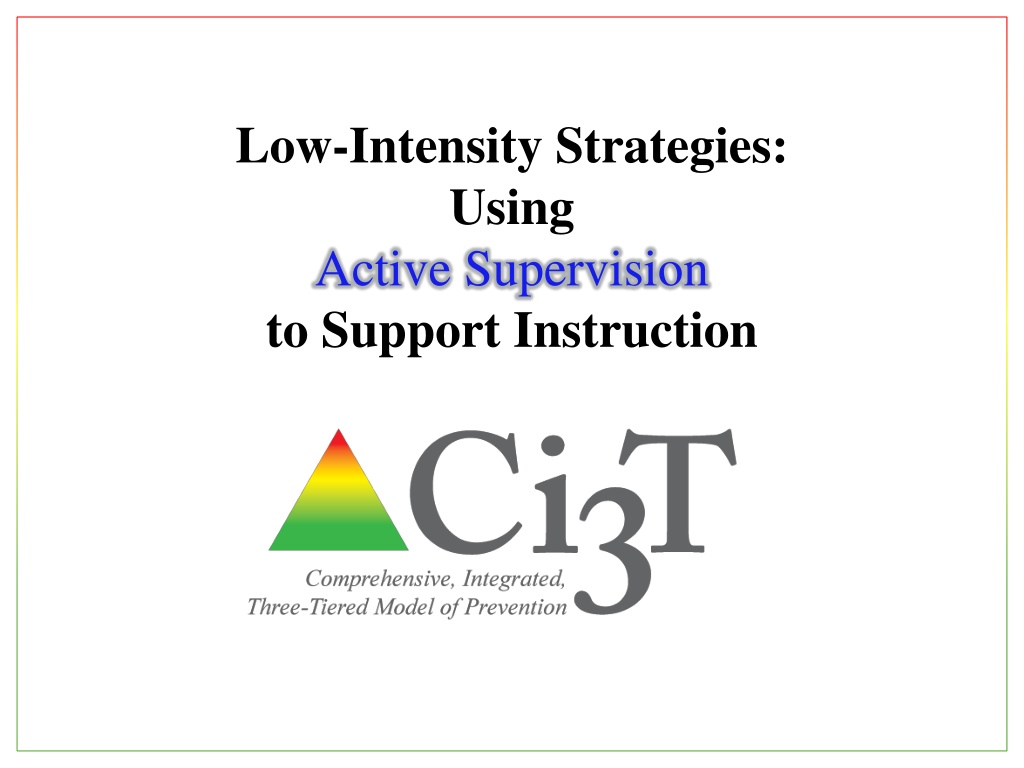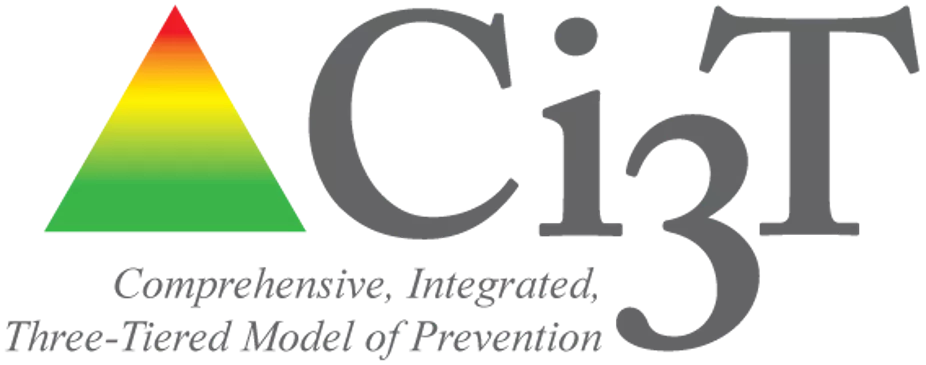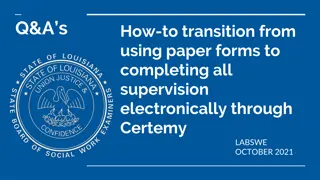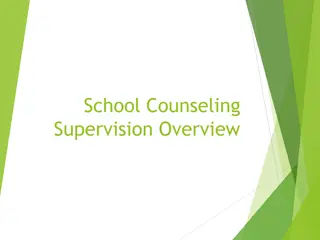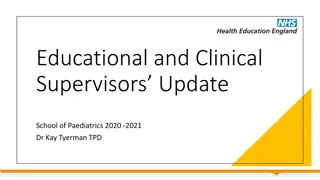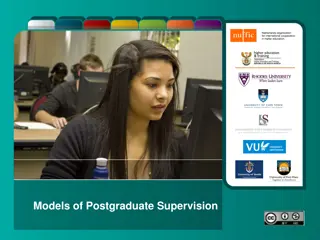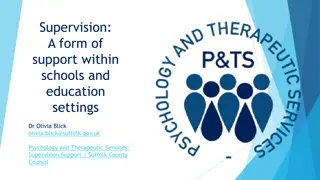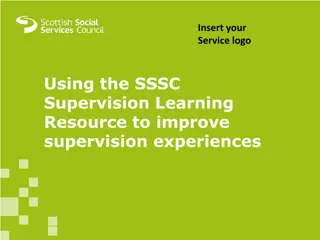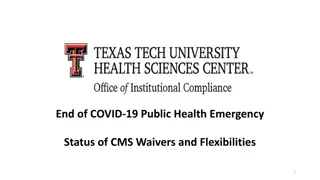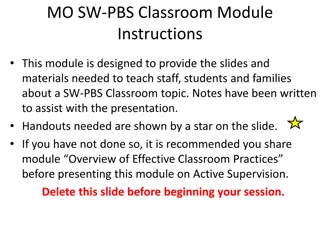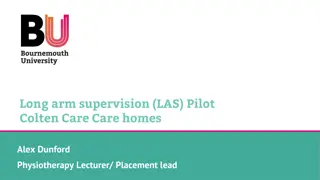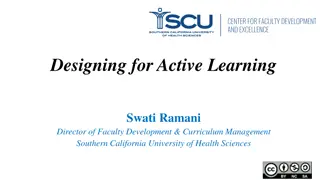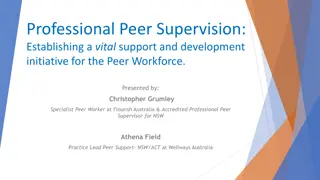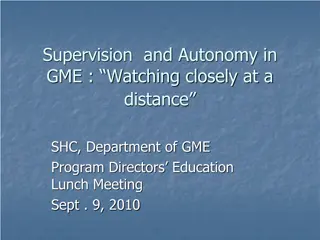Effective Strategies for Active Supervision in Education
Explore the concept of active supervision as a low-intensity strategy to support instruction in educational settings. Understand the distinct elements, benefits, challenges, and the effectiveness of active supervision in preventing problem behavior and promoting positive learning environments. Supported by research, active supervision is proactive, structured, and fosters desirable behaviors among students.
Download Presentation

Please find below an Image/Link to download the presentation.
The content on the website is provided AS IS for your information and personal use only. It may not be sold, licensed, or shared on other websites without obtaining consent from the author.If you encounter any issues during the download, it is possible that the publisher has removed the file from their server.
You are allowed to download the files provided on this website for personal or commercial use, subject to the condition that they are used lawfully. All files are the property of their respective owners.
The content on the website is provided AS IS for your information and personal use only. It may not be sold, licensed, or shared on other websites without obtaining consent from the author.
E N D
Presentation Transcript
Low-Intensity Strategies: Using Active Supervision to Support Instruction
Agenda Comprehensive, Integrated, Three-Tiered (Ci3T) Models of Prevention A Look at Active Supervision What is active supervision? Why is active supervision effective? What does the supporting research for active supervision say? What are the benefits and challenges? How do I use active supervision in my classroom? Checklist for Success How well is it working? Examining the Effects
What is active supervision? Distinct Elements: Use of Specific and overt behaviors (scanning, escorting, interacting) designed to prevent problem behavior and promote rule- following behavior (Colvin, Sugai, Good, & Lee, 1997, p. 346). Established expectations Frequent scanning of context Positive interactions (verbal and nonverbal precorrections and prompts) Reinforcement of desired behavior When necessary, correction to help success Effectiveness is increased when used with precorrections. (De Pry & Sugai, 2002; Haydon & Scott, 2008) (Lane, Menzies, Ennis, & Oakes, 2015)
What is active supervision? See AS Introduction
Why is active supervision effective? Proactive: It is more efficient to prevent problems from occurring or escalating than addressing them after they occurred (Colvin, 2004). Provides routines and structures to avoid problem behavior caused by overcrowding and impersonalized learning (Jackson, 1990). Systematically averts challenges while prompting prosocial behaviors PBIS (Sugai & Horner, 2006). (Lane, Menzies, Ennis, & Oakes, 2015)
What does the supporting research for active supervision say? Reduces high rates of minor classroom behavior (De Pry & Sugai, 2002) Increases time spent learning in middle school (Haydon, DeGreg, Maheady, & Hunter, 2012) Improves behaviors during transition (Colvin, Sugai, Good, & Lee, 1997) Reduces tardiness to class in middle and high school (Tyre, Feuerborn, & Pierce, 2011)
Supporting Research See AS Resource Guide for additional supporting research and information.
What are the benefits and challenges? Benefits Reduces problem behavior in multiple school contexts Improves time spent on- task Can target specific behaviors Essential part of school safety Proactive Challenges Performing consistently is difficult Requires some innate ability to monitor student activity Requires prerequisite familiarity and fluency of precorrection, prompting, and reinforcement (Lane, Menzies, Ennis, & Oakes, 2015)
How do I implement active supervision in my classroom? Identify the activity or transition period that would benefit most from active supervision. Step 1 Ensure that the routine for the target activity is familiar and understood by students. If not, routines and expectations must be established. Step 2 Step 3 Provide the cue or prompt to begin the activity. Step 4 As the activity unfolds, scan and monitor the area. (Lane, Menzies, Ennis, & Oakes, 2015)
How do I implement active supervision in my classroom? Signal your awareness of students actions through proximity, prompts, and non-verbal communication. Step 5 Manage infractions and off-task behavior efficiently: privately, in a businesslike way, and with opportunities for positive interactions. Step 6 At appropriate intervals and at the end of the activity or transition, reinforce students good behavior with positive comments and gestures. Step 7 Step 8 Provide the students with an opportunity to give feedback. (Lane, Menzies, Ennis, & Oakes, 2015)
How do I increase Active Supervision in my classroom? Checklist for Success See AS Implementation Checklist (Lane, Menzies, Ennis, & Oakes, 2015)
How well is it working? Examining the Effects Experimental Design Treatment Integrity Social Validity Is it What do stakeholders think about the goals, procedures, How well did this support work for happening? this and student? outcomes?
Ensuring the Strategy is in Place: Treatment Integrity See AS Treatment Integrity Checklist
Social Validity: What does the student think about it? See AS Social Validity Student Survey for Pre and Post Completed by the student(s) participating in the intervention at two time points: Pre and Post Intervention
Social Validity: What does the teacher think about it? See Social Validity Adapted- IRP15 Adult for Pre and Post Completed by the teacher and/or parent participating in the intervention at two time points: pre and post intervention
Sample Elementary Grid Illustration Support Description School-wide Data: Entry Criteria One or more of the following: Data to Monitor Progress Student Performance Data on target behavior monitored - On time arrival - On task - Time to transition Exit Criteria No planned exit criteria; New procedure to remain in place for the balance of the school year Active Supervision The use of specific and overt behaviors (scanning, escorting, interacting) designed to prevent problem behavior and promote rule-following behavior (Colvin et al., 1997, p. 346). Teacher may create behavior specific implementation plan in which the following distinct elements are incorporated (De Pry & Sugai, 2002; Haydon & Scott, 2008): Examples: Percentage of students late to class at the onset of the school day exceeding 10% during a 2 week period 3+ ODRs earned during lunch for a 2 week period More than 20% of students in a class are off task during center time for a 1 week period of time Treatment Integrity Component checklist Established expectations Frequent scanning of context Positive interactions (verbal and nonverbal precorrections and prompts) Reinforcement of desired behavior When necessary, correction to help success. Social Validity Student- and teacher- completed surveys More than 20% of students in a class exceed allotted time for transitions
Sample Middle/ High Grid Illustration Support Description School-wide Data: Entry Criteria One or more of the following: Data to Monitor Progress Student Performance Data on target behavior monitored - On time arrival - On task - Tardies Exit Criteria No planned exit criteria; New procedure to remain in place for the balance of the school year Active Supervision The use of specific and overt behaviors (scanning, escorting, interacting) designed to prevent problem behavior and promote rule- following behavior (Colvin et al., 1997, p. 346). Teacher may create behavior specific implementation plan in which the following distinct elements are incorporated (De Pry & Sugai, 2002; Haydon & Scott, 2008): Examples: Percentage of students late to first period exceeding 10% during a 2 week period 5+ ODRs earned during lunch for a 2 week period Treatment Integrity Component checklist More than 20% of students in a class are off task during group activities for a 1 week period of time More than 20% of students in the school tardy to one or more periods for a 1 week period of time Established expectations Frequent scanning of context Positive interactions (verbal and nonverbal precorrections and prompts) Reinforcement of desired behavior When necessary, correction to help success. Social Validity Student- and teacher-completed surveys
Related Resource Lane, K. L., Menzies, H. M., Ennis, R. P., & Oakes, W. P. (2015). Supporting behavior for school success: A step-by-step guide to key strategies. New York, NY: Guilford Press.
Low-Intensity Strategies for Academics and Behavior Opportunities to Respond Behavior Specific Praise Active Supervision Instructional Feedback High p Requests Precorrection Self-monitoring Incorporating Choice Behavior Contracts
Will you please . Plan Implementation Checklist for Success: Active Supervision
